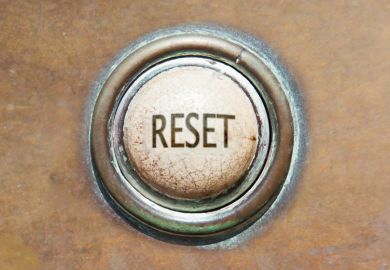Defining the goal is the step that many university leaders overlook when they try to turn their institutions into engine rooms of sustainability, according to an analyst who produced a 10-step guide on the subject.
Victoria Galán-Muros said sustainability initiatives often faltered at “stage zero”, with universities lacking a shared conception of what they were trying to achieve – and why.
“When we talk about sustainable development, we don’t all talk about the same thing,” Dr Galán-Muros told Times Higher Education’s Global Sustainable Development Congress in Bangkok. “[We need] common definitions, a common understanding [and] clear, efficient and meaningful communication.”
Resources for higher education professionals on the Sustainable Development Goals
Dr Galán-Muros said that while the United Nations had its own characterisation of sustainable development, universities were under no obligation to adopt it. “Look for your own [definition] but make sure you have one and it’s shared within your organisation.”
A clear understanding of objectives was equally important, she said. “Are we doing this because we want to have more relevant teaching and research? Do we want to strengthen our university’s social responsibility? Do we have external pressure? Is this about rankings? It could be any reason, but that needs to be clear.”
Dr Galán-Muros, chief of research and analysis at the International Institute for Higher Education, is author of the UN Educational, Scientific and Cultural Organization’s General guidelines for the implementation of sustainability in higher education institutions. She said most initiatives suffered from the same shortcomings: they were short-term, scattered, uncoordinated and incoherent.
“If we really want to transform our institutions into more sustainable ones, we need to think long-term and strategically. It needs to be a fully institutional initiative. It needs to be coordinated and it needs to be coherent.”
The congress, which wrapped up on 13 June, attracted 3,000 delegates – an order of magnitude more than the debut event in Glasgow in 2022. Sanjana Chhantyal, a youth project leader with the UN’s Sustainable Development Solutions Network, said universities were “never too small or too big to learn”.
“We need leaders who have experience, expertise, ideas and insights to work collaboratively,” she told the forum. “The problems in our ecosystem are interconnected, so how do we make the solutions interconnected as well?”
Western Sydney University, which has topped Times Higher Education’s Impact Rankings for the third year running, said it planned to “double down” on its sustainability activities. “These are not straightforward for institutions. They’re big investments. But the payback periods are actually quite quick,” said provost Kevin Dunn.
He said that if universities wanted to “talk to the world about sustainability”, they needed to assert their own credibility by ensuring that their water use and carbon emissions were “the best they can be”.
Dr Galán-Muros said universities needed to adopt a sense of urgency. The 2030 deadline for the Sustainable Development Goals (SDGs) is “around the corner”, she warned.
“We know the problems. We have the SDG framework. Universities have huge potential to transform the world and to contribute to the SDGs. But we shouldn’t wait too long. If not universities, then who? And if not now, when?”





